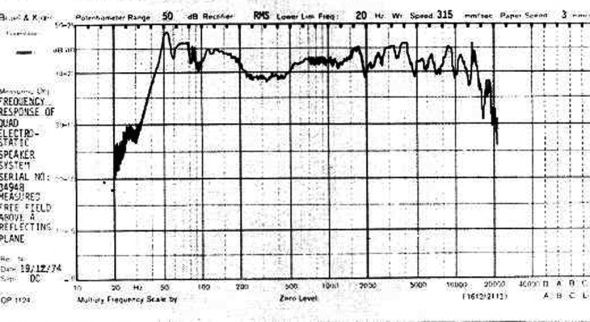Let me clarify this first... The biases that I see are 100% with the process of putting the test together, not with the evaluators, and consequently with the people behind putting the test together. The biases involve the software, hardware and the room.
Starting with the software biases I see, the musical material appears "light" and not very demanding to me, but I have to admit I am not familiar with it. I am only guessing there was voice, a guitar and perhaps a couple of other strings and maybe some light drumming involved. However, having lived with the similar $3K ML SL-3 in the past and also owning $600 Monitor Audio mini-monitors in another system, I can safely guess that, if one were to put on much more demanding material on - like Mahler's 2nd - I would hazard a guess the cheap dynamic speakers in the test would fall apart and the ML would hold well. I get really beautiful sounds with quartets from my Monitor Audios and they just [naturally] suck at large orchestral.
On to the hardware bias... It's a very common mistake to assume that any sufficiently powerful amp can properly drive difficult loads as an ML - flat out: NO; I can't stress this enough. I have posted in the past that I was about to purchase the ML Summit X last September (a more difficult load than my Odysseys), had a custom configuration quoted for me, only to kill the deal at the very last audition. Why? Because even the very capable, close-to-state-of-the-art and one of the top amps in the market Spectral 360 Series II monos that I use sounded harsh up top and would eventually shut down, and they are one of the few amps rated at 2ohms. In case anyone thinks that I am simply making a statement to win an argument, here's a PM I sent Myles back then, so he can corroborate the truth of my claims:
So I am thinking twice about the X - not a good match with the Spectrals, it seems. I took another listen today, and the sound is aggressive from the midrange up, tilting doesn't really help - it's not a tonal balance issue - and the amps shut down with high-frequency content like mass brass on Stravinsky's Rite of Spring, at high enough (but not ear splitting) volumes. Overall, the X is a more resolving speaker than the Odysseys - crisper - but the system right now is so beautiful that I wonder why do I need to break it. If nothing else, I might look at rebuilding the average-quality crossover.
Next, the room - am I right that the room was unechoic? A dipole is not meant to have its back wave absorbed - this is a fundamental flaw.
There are a couple of points here. The test simply shows that most people like dynamic speakers over panel ones; at least with the material used. _We know that_. That's why out of the 600 speaker manufacturers out there, there are only a dozen specializing in panels, and size differences (the visual aspect) is not enough to account for this disparity. The test should have used an expensive dynamic speaker as the poster child. For what is worth, I stated the other day that my own references are primarily the Magico Q3 and Q5, with the ML CLX close behind. But they come from two completely different schools of thought, so it's unfair to directly compare them, unless the room, software and hardware are equally optimized for all subjects under test - an extremely difficult feat. I just don't see this requisite unilateral optimization in the test we are discussing.
Finally, if I haven't driven this point hard enough, it is hard to drive a panel correctly, and it's equally hard for many listeners to like the panel sound. I'll save all the details for another thread, but to give a common example, panels can render unrealistically large images - that's a big turnoff for most people. But, alas, this is not necessarily a function of the speaker alone; I have had a number of amps inhouse and only the current Spectrals can make my ML's sound small when the program calls for it, likewise large when appropriate. It's not by happenstance that serious ML setups (and frankly, all Magnepan and Analysis Audio I have heard) run these speakers with very capable (and unfortunately, expensive) amplifiers.
If the A/B test wanted to point out that inexpensive dynamic speakers can be preferable to unoptimized panels with light material, it succeeded. But it's biased in my view, and simply points out common preferences.


